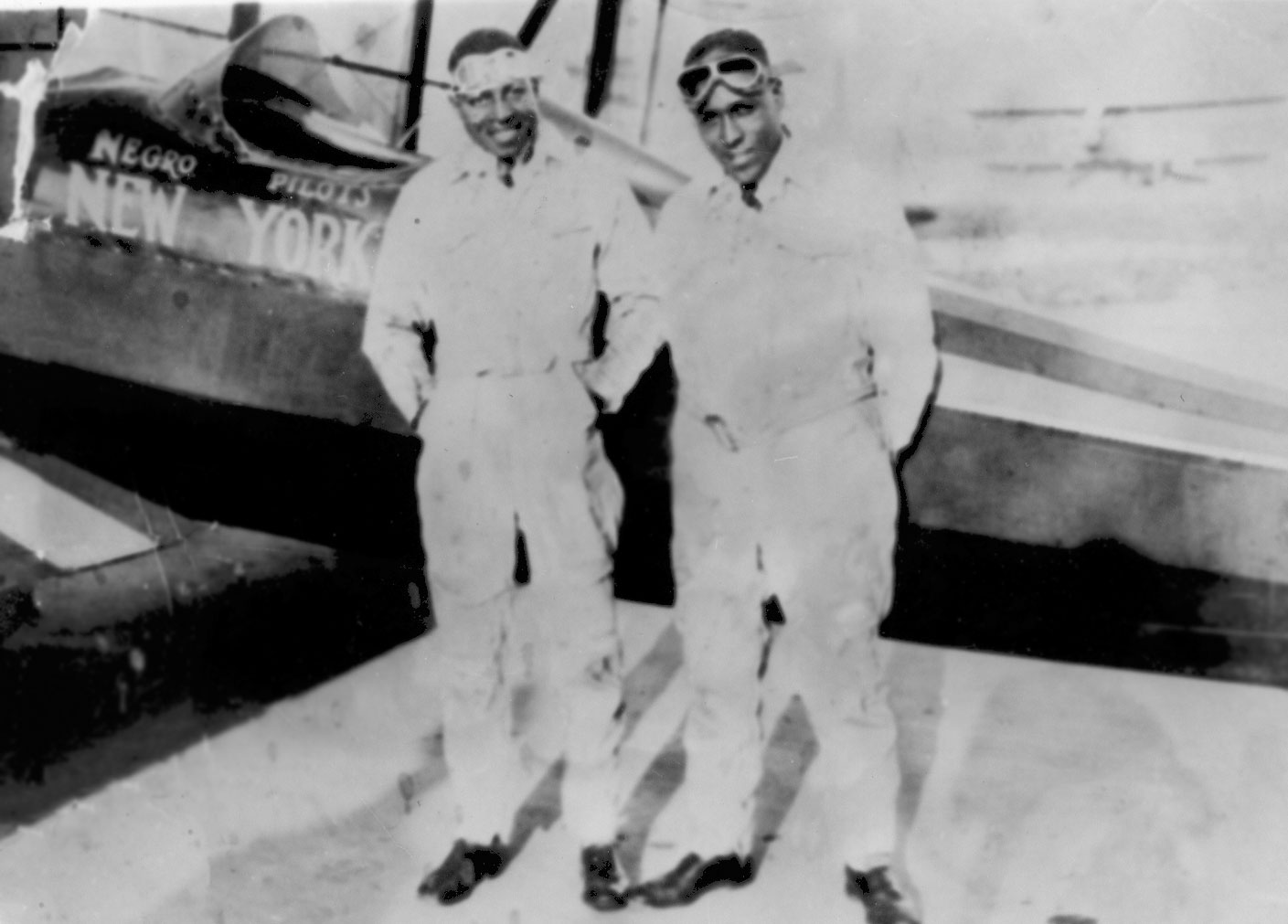The Encyclopedia of Oklahoma History and Culture
BANNING, JAMES HERMAN (1900–1933).
James Herman Banning was born in Canton, Oklahoma Territory, on November 5, 1900, to Riley and Cora Banning. Riley Banning became the owner of 160 acres of land near Kingfisher in December 1903 through the Homestead Act. James Banning attended school in a small schoolhouse built by his parents on the family property. He later headed to Guthrie to attend Faver High School, graduating in 1918. He moved to Ames, Iowa, in 1919 and studied electrical engineering at Iowa State College while operating the J. H. Banning Auto Repair Shop in Ames. He owned this business from 1922 to 1928. In spring 1920 he took his first airplane ride at an air circus that came to Iowa to perform. His passion for flight grew tremendously after that first airplane ride. He took flying lessons from a World War I U.S. Army aviator at Raymond Fisher's Flying Field in Des Moines, Iowa. Banning would eventually come to hold a mechanics certificate and pilot's license number 1324, the first African American aviator to obtain a license from the U.S. Department of Commerce, in 1926. Later, in Texas he obtained a transport pilot's license.
In 1929 the Bessie Coleman Aero Club aviation school for African Americans was opened in Los Angeles, California, to honor the famous first African American licensed woman pilot. Banning left Iowa to take a job as the school's chief instructor. He was described as the "most experienced African American pilot at that time." He purchased his own biplane and named it Miss Ames.
In 1932 Banning and Oklahoma City resident Thomas Cox Allen joined together to become the first African Americans to fly coast to coast. They left Los Angeles on September 18, 1932, and arrived at Long Island, New York, on October 9, 1932. They made the 3,300-mile trip over that twenty-one-day period with actual flight time of forty-two hours. They were nicknamed "the Flying Hobos," as they had to stop along the route to raise money to buy gas, make repairs, and continue on their way. When they reached New York, Mayor Jimmy Walker welcomed them with a key to the city. The Cotton Club in Harlem celebrated their accomplishment with performances by Duke Ellington and Cab Calloway.
Banning was killed in a plane crash at a San Diego, California, air show on February 5, 1933. He was trying to earn enough money to retrieve his cross-country aircraft, which had been forced down and left in Hiattsville, Pennsylvania, after the famous flight. The irony of his death is that it came at the hand of prejudice. Because of his color, this experienced pilot was not allowed to fly the plane in the air show. Instead, he had been only a passenger in a plane piloted by an aviation machinist mate second class from the San Diego Naval Air Station.
See Also
BENNETT HILL GRIFFIN, ROY ORLANDO HUNT, DOROTHY PRESSLER MORGAN, WILEY HARDEMAN POST, APOLLO SOUCEK
Learn More
"J. Herman Banning," Vertical File, Research Division, Oklahoma Historical Society, Oklahoma City.
Philip S. Hart, Flying Free (Minneapolis: Lerner Publications, 1992).
Philip S. Hart, Up In the Air (Minneapolis: Carolhoda Books, 1996).
John Holyfield, The Hallelujah Flight (New York : G. P. Putnam's Sons, 2010).
Keith Tolman et al., The Oklahoma Aviation Story (Oklahoma City: Oklahoma Heritage Association, 2005).
Citation
The following (as per The Chicago Manual of Style, 17th edition) is the preferred citation for articles:
Bill Moore, “Banning, James Herman,” The Encyclopedia of Oklahoma History and Culture, https://www.okhistory.org/publications/enc/entry?entry=BA042.
Published June 16, 2016
Last updated June 20, 2018
© Oklahoma Historical Society


